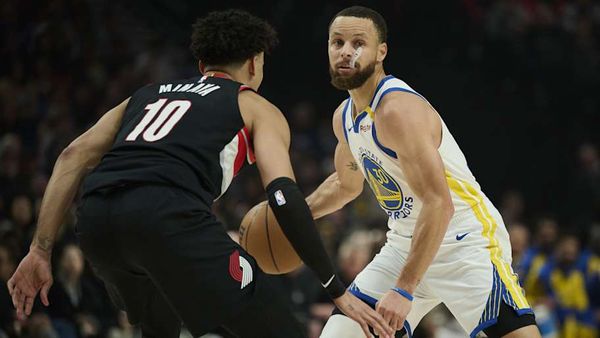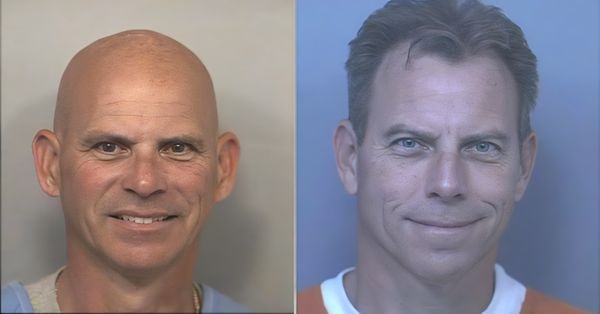“Top Gun: Maverick” is the biggest global blockbuster of Tom Cruise’s already blockbustery career. Perhaps you’ve been compelled to rewatch the original “Top Gun” from 1986 — or, depending on your generation, watch it for the first time. But me? I went back to revisit another movie Cruise made with director Tony Scott and producers Don Simpson and Jerry Bruckheimer: 1990′s “Days of Thunder.” It’s more or less the same movie as “Top Gun” — speed, testosterone, soaring guitars — but with race cars instead of warplanes, which on its face makes it better. Way better.
Cruise plays Cole Trickle, a novice stock car driver with something to prove. He’s recruited by a fledgling NASCAR team owner (Randy Quaid as an ambitious car dealer looking to make his mark) and trained by grizzled crew chief Harry Hogge (Robert Duvall as the seasoned good ol’ boy whose instincts are as sharp and tangy as his one-liners). The neurologist who treats Cole after a bad crash (Nicole Kidman in maybe the one American movie where she uses her native Australian accent) becomes his love interest and the only person who bothers asking if it’s all worth it when the stakes are possibly getting smashed to pieces or dying a fiery death.
Everyone else has their eyes on the prize: Winning Daytona.
Like “Top Gun,” the story is straightforward: Can this young hotshot be the best? “Cole, you’re wandering all over the track,” Harry says into this headset mic during a race. “Yeah, well the sonofabitch just slammed into me!” Cole yells back. “No,” Harry tells him, “he didn’t slam into you. He didn’t bump you. He didn’t nudge you. He rubbed you. And rubbing, son, is racing.”
I don’t know anything about NASCAR. Doesn’t matter. The movie sells it. I could do without the opening montage briefly featuring Confederate flags flapping in the breeze at the track. But they’re an early symbolic hint of the movie’s white and male tunnel vision. It’s 30 minutes into the film before a woman speaks a line of dialogue. When Cole and the good doctor meet for the first time, he puts her hand on his groin and it’s a callback to an earlier joke, both of which treat sexual harassment as something to laugh at. It’s not a buzzkill to point this out. It’s there, you can’t pretend you don’t see it. You just have to take the movie on its terms. “Days of Thunder” is hardly alone in this.
“Days of Thunder” is what happened when the massive success of the first “Top Gun” gave Cruise the clout to start shaping his movies
It was Paul Newman, his co-star in “The Color of Money” (which opened in theaters six months after “Top Gun”), who got Cruise into racing. NASCAR team owner Rick Hendrick let Cruise drive one of his stock cars around Daytona. “I think I hit 175 mph,” Cruise said in an interview years later. “The second I climbed out of that car on pit road, I said, ‘We have to make a movie about this!’”
He came up with an outline for a story and reteamed with adrenaline specialists Simpson and Bruckheimer. Here’s how the producers (who were also the pair behind “Flashdance” and “Beverly Hills Cop”) are described in an oral history of the movie published by ESPN: “They were known as ‘Mr. Inside’ and ‘Mr. Outside,’ Simpson bringing the Hollywood Rolodex while Bruckheimer delivered a get-your-hands-dirty knowledge of film production.”
Scott was also back as director, recycling at least one shot from “Top Gun” of two lovers in silhouette going in for a kiss. A number of people worked on the screenplay, but it was Robert Towne (an Oscar winner for “Chinatown”) who got it to gel. (Towne would work with Cruise again on “The Firm” and the first two installments of “Mission: Impossible.”)
This wasn’t NASCAR looking to Hollywood for a marketing boost. Cruise and company were slack-jawed by the high-injection, grease-stained world of racing and wanted to capture that in a palpable way.
I’m not saying that’s purer than “Top Gun’s” origins. But maybe I am.
In the worst kept secret ever, “Top Gun” was made with the specific purpose of rebranding the Navy’s image in the '80s, when the ghosts of Vietnam were barely more than a decade in the past. A similar intent — oh, let’s just call it what it is: propaganda — fuels the sequel.
I’m far more inclined to fist-pump car racing than … war. And just the Duvall of it all! He’s playing a man who is easily amused by the absurdities of life, which is maybe the key factor keeping the story glued together. And the movie ends with a freeze-frame, which somehow tapped into nostalgia I didn’t know I had. Dear Hollywood: Bring back the freeze-frame ending.
Of course, I went back and rewatched the '86 “Top Gun” too. Cruise was already famous by that point, thanks to his role in “Risky Business,” but “Top Gun” elevated him to International Movie Star status and he hasn’t looked back since.
That got me thinking about his career in the 10 year span that followed “Top Gun.” The pool hustling in “The Color of Money.” The trick bartending in “Cocktail.” The road-tripping in “Rain Man.” The war serving and subsequent war protesting in “Born on the Fourth of July.” The race car driving in “Days of Thunder.” The Irish immigrating of “Far and Away.” The lawyering in “A Few Good Men” and “The Firm.” The bloodsucking in “Interview with a Vampire.” The covert missioning in “Mission: Impossible.” The agenting in “Jerry Maguire.”
I wouldn’t say Cruise has tremendous range, but that doesn’t mean his talent isn’t substantial. A singer doesn’t have to have a four-octave range to be considered good, and an actor doesn’t have to be a shapeshifter to be considered good either.
So yes, Cruise is always playing a version of the same guy. Cocksure with something to learn. Intense. (Can you imagine Cruise playing someone who isn’t dialed in?) He’s the blazing talent who is somehow also the underdog and he is forever in search of male bonding and father figures who are otherwise missing in his life.
But look at those films listed above. So many different types. Some of these roles suit his talents better than others. But I like that he went for it. And he’s squaring off with some towering old guard names: Duvall, Newman, Dustin Hoffman, Jack Nicholson, Gene Hackman. Even with top billing, he was willing to take roles where wasn’t always the most important person in the story.
Curiosity piqued, these past few days have resembled a mini-Tom Cruise film festival as I’ve gone back through these movies that I haven’t seen for years. Cruise used to seek out more variety. I miss that. His output in the last decade is primarily the “Reacher” movies, the “Mission: Impossible” movies and ... more of the same but called something else. My mental image of Cruise lately is that of the guy who talks about doing his own dangerous stunts.
That he’s a tremendous movie star was always a given. But I forgot what a good actor he can be — I was glad for the reminder — I forgot how willing he was to play around in different genres. Cruise almost always plays guys who are smart, but I love that he’s such a ding-dong in “The Color of Money.” (It’s really Newman’s film, especially those first 20 minutes when it’s all about Newman’s subtle facial expressions as he sizes up the kid.) There’s 1994′s “Interview with a Vampire,” which is a terrible movie, full stop. I forgot how wooden Brad Pitt’s performance is, and Cruise is probably miscast as well, but he so rarely plays unlikeable characters that I felt a strange thrill watching him attempt to take on the high gothic drama of Lestat.
Who knows why stars pick the projects they do. Cruise has been pretty one-note for a while now, and maybe for reasons that might be less about what interests him personally and more about the movie business itself and what gets people to hit pause on streaming and head to a theater.
But go back and watch what he’s doing in the 1993 legal thriller “The Firm.” First off, pianist Dave Grusin’s score is just a thing of propulsive beauty. And here’s Cruise in a familiar role — a winner on his way to becoming a loser if he doesn’t clock what’s going on around him — but there’s so much skill to how he’s playing this young lawyer, Mitch McDeere, who is in over his head when he joins a firm that’s doing business with the mob. Mitch is confident, but Cruise doesn’t push as hard as you might expect. There’s a stillness, even as you see the gears moving inside his head when he realizes the mess he’s in, and then brainstorms a way out. The guy has a soul. Doesn’t hurt that the script, adapted from John Grisham’s novel, has a tight plot and a sardonic approach to storytelling.
Just a month after its release, “Top Gun: Maverick” has grossed roughly $1 billion worldwide. A lot of that is because of Cruise. But if you have the inclination and access to the right streaming subs, it’s worth revisiting the varied titles from earlier in his career when he was actually embodying some maverick instincts of his own.
———







